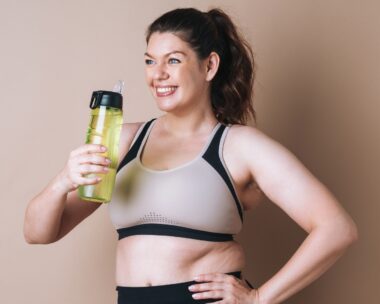If you want beautiful, youthful looking skin, the first place you should go is the vegetable aisle at your supermarket, reckons Australian nutritionist Karen Fischer.
Karen says that, while a variety of factors play a part in how well our skin ages and whether we suffer from conditions like acne or eczema, we can improve the way it looks by making some basic lifestyle changes, including changing our diet.
In her book The Healthy Skin Diet, Karen outlines her eight basic guidelines for healthy skin. The first focuses on balancing the pH of our bodies, which Karen says plays a crucial part in giving us beautiful skin.
our body’s tissues and blood should mostly be slightly alkaline, she says. If your blood pH is too acidic, a variety of health problems can result and your skin may also be affected. Too much acid can reduce the amount and quality of collagen and elastin in your skin, so you can end up with premature ageing and wrinkles.
Too many acids in the body can also cause the loss of essential minerals, leading to dry and cracked skin as well as fingernails that split easily and thin, brittle hair. An overly acidic system might also damage red blood cells and your skin is likely to look dull and pasty as a result.
Common symptoms of too much acid (acidosis) include:
Skin problems such as eczema, acne, itchy and patchy skin
Fatigue
Poor circulation
Frequent colds and flu
Headaches
Gastrointestinal problems including cramps, acid reflux, diarrhoea and abdominal pains
Nervousness, anxiety and depression
Dental problems such as bleeding gums
Cracked lips
ouscle cramps or spasms
Joint pain
Insomnia
Vaginal discharge
*Any of these symptoms could also be related to other conditions and should be discussed with your doctor if they are impacting on your life.
What causes excess acid in your body?
Stress
Coffee and other products containing caffeine
Alcohol
Smoking
Chemicals
Dehydration
Parasites, like worms
Candida albicans
oedication, including some prescription drugs
Constipation/poor bowel health
Poor diet/acid-forming foods
Some acid-producing foods may not seem acidic but it’s what they do once you’ve eaten them and not how they taste that makes the difference, says Karen. Acid-forming foods are usually okay in moderation but if you eat too many (especially if you do other things that upset your body’s pH balance, like smoke tobacco or drink lots of alcohol) then they can cause problems.
While it’s no shock to learn that foods that already have a bad reputation – such as sugar, white flour products, foods high in saturated and trans fats, meat, dairy, soft drinks, chips and alcohol – are acid forming foods, many people are surprised to find most fruits also create acid when they’re digested.
“This is because fruit has an extremely high sugar content,” says Karen. “Yes, fruit contains natural sugars but they still promote acidity.” However, there are some fruits (like lemons), which you’d think would be acid forming, that are in fact strongly alkalising, Karen says once you know which foods are acid-forming and which ones have an alkalising effect, you can try to eat a diet that balances the two. Cutting right down on acid-forming foods and eating mostly alkalising ones will give your body a major cleanse to decrease acidity and can help your bowels as well as your skin.
But eating this way should only be done for a week at most because your bodies do need a balance of the two and many acid-forming foods have health benefits. Karen’s book includes recipes that feature a healthy ratio of both kinds of foods.
Karen’s seven guidelines for healthy skin are:
Eat foods that will moisturise your skin from the inside out. These include oily fish and flaxseeds, which contain valuable omega 3 fatty acids.
Eat less. Try to cut calories by up to 30% but never skip a meal. Make sure you eat protein every day.
Get enough sleep.
Sweat for 15 minutes a day while doing exercise.
Have a good skin-care routine. Check the ingredients in the beauty products you buy to make sure they won’t irritate your skin. Try to avoid sodium lauryl sulphate, formaldehyde and parabens.
Wear a hat in the sun and apply sunscreen.
Relax – people who stress less tend to have better skin.
Worst acid-forming foods include:
Vinegar
Spirits and wine
Pork
Beef
Processed fruit juice
Salmon
Black tea
Artificial sweeteners
Chocolate
oilk
oargarine
Pickles and mustard
Walnuts, hazelnuts and peanuts
Blackcurrants
Kiwifruit
oranges
White rice
Yellow cheeses
Pineapple
Coffee



